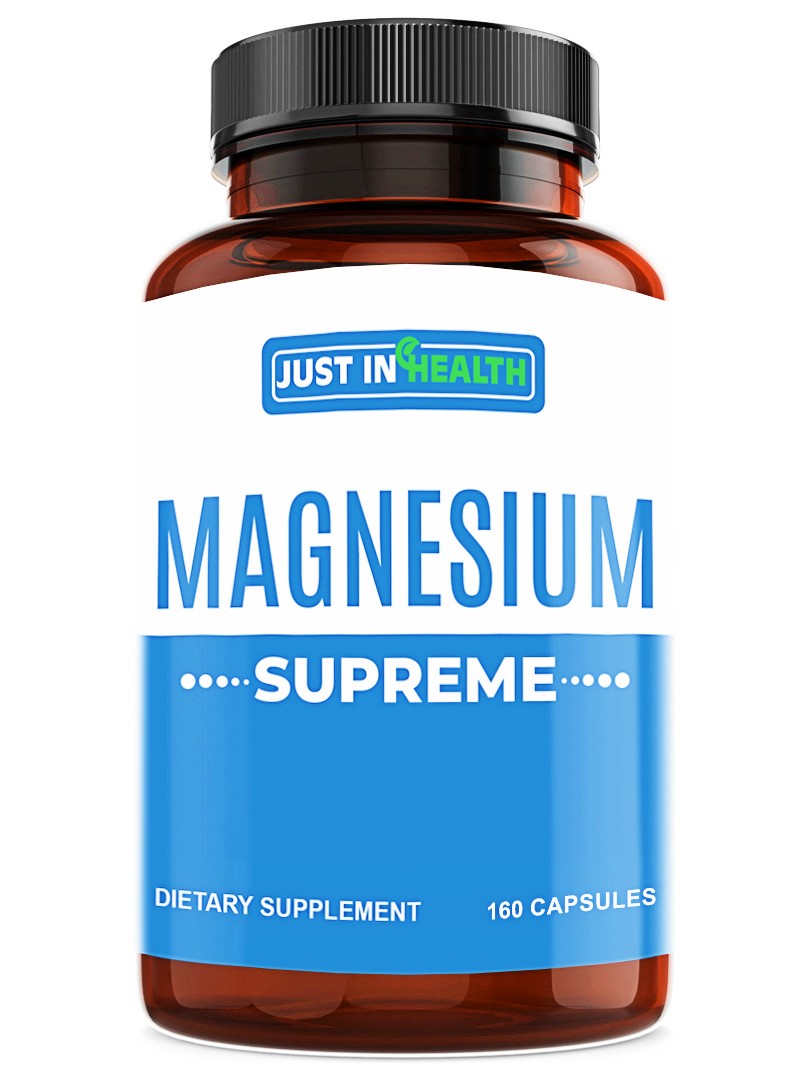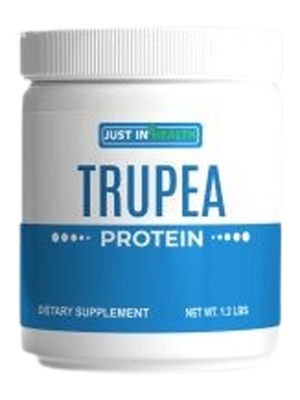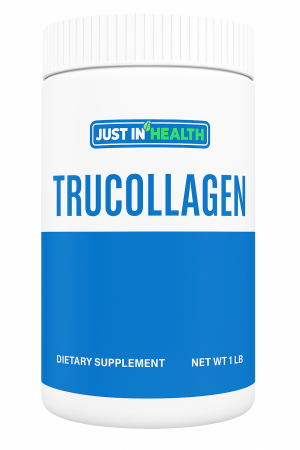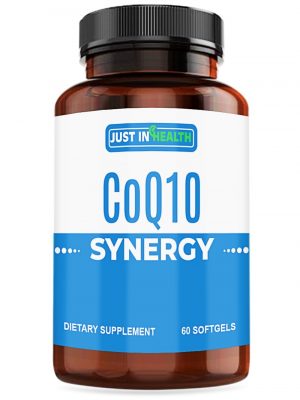Description
Magnesium Supreme – Advanced Chelated Magnesium-Malate Optimization System
The Magnesium Deficiency Crisis We Keep Observing
When we started working with patients complaining of persistent muscle tension, poor sleep quality, unexplained fatigue, and exercise recovery issues, we began systematically assessing their magnesium status through dietary analysis and, when appropriate, red blood cell magnesium testing. What we discovered was alarming: the vast majority of these patients consumed well below the recommended daily allowance for magnesium, and many showed biochemical evidence of magnesium insufficiency despite eating what they considered “healthy diets.”
The statistics support what we were seeing clinically. USDA data reveals that less than one in three adults meets the recommended daily intake for magnesium—making magnesium one of the most common nutrient deficiencies in modern populations. Even more concerning, standard blood tests (serum magnesium) miss most cases of deficiency because the body tightly regulates blood magnesium levels by pulling from bone and tissue stores, meaning serum levels can appear normal while cellular magnesium remains depleted.
We investigated why magnesium deficiency has become so prevalent and found multiple contributing factors: modern agricultural practices that deplete soil magnesium (resulting in lower magnesium content in foods), food processing that removes magnesium-rich components (like bran from grains), dietary patterns emphasizing processed foods over magnesium-rich whole foods (leafy greens, nuts, seeds, whole grains), increased stress that accelerates magnesium depletion, medications that impair magnesium absorption or increase excretion (proton pump inhibitors, diuretics, certain antibiotics), and digestive issues that reduce mineral absorption.
When we recommended magnesium supplementation, however, we encountered another problem: many patients reported digestive discomfort or laxative effects from common magnesium supplements (particularly magnesium oxide or citrate at higher doses). Additionally, blood testing after supplementation sometimes showed minimal improvements in magnesium status despite consistent use, suggesting poor absorption from certain supplemental forms.
This led us to research magnesium forms with superior bioavailability and tolerability. We discovered that chelated magnesium—where magnesium is bound to amino acids or organic acids—demonstrates significantly better absorption and causes fewer digestive side effects than inorganic magnesium salts. Furthermore, we found that combining chelated magnesium with malic acid provides additional benefits: malic acid itself supports cellular energy production while the magnesium-malate complex provides highly absorbable magnesium.
Magnesium Supreme represents this evidence-based solution: an Advanced Chelated Magnesium-Malate Optimization System combining Albion® magnesium glycinate chelate and di-magnesium malate to provide 260 mg of highly bioavailable, well-tolerated elemental magnesium plus 660 mg of malic acid supporting cellular energy production, muscle function, and post-exercise recovery.
Why Standard Magnesium Supplements Disappoint
Most magnesium supplements use inorganic magnesium salts—magnesium oxide, magnesium sulfate (Epsom salt), or magnesium hydroxide—that are cheap to produce but poorly absorbed and cause notorious digestive side effects. This conventional approach fails to address four critical realities of optimal magnesium supplementation:
The Bioavailability Problem: Magnesium oxide—one of the most common supplemental forms—has bioavailability of only 4-15%, meaning 85-96% of the magnesium consumed is never absorbed. Even magnesium citrate, often marketed as “highly absorbable,” has only moderate bioavailability (30-40%). Inorganic magnesium forms require conversion to ionic magnesium (Mg²⁺) in the acidic stomach, then must compete for absorption through limited magnesium ion transporters in the intestine—a process that is easily saturated and inefficient.
The Digestive Tolerance Challenge: Poorly absorbed magnesium remains in the intestinal lumen where it creates osmotic effects—drawing water into the intestine and causing loose stools or diarrhea. This is why magnesium citrate and magnesium hydroxide are used as laxatives. While occasional laxative effects might be tolerable, the chronic digestive discomfort from poorly absorbed magnesium supplements causes many people to discontinue use, leaving their deficiency unaddressed. The therapeutic dose for magnesium support often exceeds the digestive tolerance for poorly absorbed forms.
The Dosing Inefficiency Issue: Because inorganic magnesium forms are poorly absorbed, manufacturers must include very high doses (often 400-500 mg elemental magnesium) to deliver meaningful absorbed amounts. This requires large tablets or multiple capsules per serving, creating a pill burden that reduces compliance. Even then, actual absorbed magnesium may be modest due to poor bioavailability, while the unabsorbed magnesium causes digestive distress.
The Missing Synergistic Support: Standard magnesium supplements provide only magnesium without considering complementary compounds that could enhance benefits. Magnesium's roles in cellular energy production, muscle function, and recovery could be amplified by including compounds like malic acid that directly support these same processes. Yet most formulas ignore these synergistic opportunities, providing isolated magnesium in forms that may not even be well absorbed.
These widespread problems mean that people taking standard magnesium supplements often experience minimal benefits (due to poor absorption), significant digestive side effects (due to unabsorbed magnesium remaining in the intestine), and eventual discontinuation of supplementation—leaving their magnesium deficiency unresolved despite their efforts to address it.
The Magnesium Supreme Chelated Malate Strategy
Magnesium Supreme implements a sophisticated dual-chelate approach that fundamentally transforms magnesium supplementation through superior absorption, excellent tolerability, and synergistic energy support:
Dual Chelated Magnesium Complex – Combines Albion® magnesium glycinate chelate (magnesium bound to the amino acid glycine) and di-magnesium malate (magnesium bound to malic acid), providing magnesium in organic chelate forms that demonstrate 3-5 times higher bioavailability than inorganic magnesium salts through amino acid and organic acid transport pathways rather than competing for limited magnesium ion transporters.
Superior Digestive Tolerance – The chelated forms remain intact through the stomach and are absorbed as complete chelate complexes rather than releasing free ionic magnesium that creates osmotic laxative effects. This results in dramatically better digestive tolerance, allowing therapeutic magnesium doses without the digestive discomfort that plagues standard magnesium supplements.
Synergistic Malic Acid Enhancement – The 660 mg malic acid (from di-magnesium malate) provides its own therapeutic benefits: malic acid is a key intermediate in the Krebs cycle (citric acid cycle) supporting ATP energy production, supports muscle endurance and reduces post-exercise soreness, and enhances the already superior absorption of the magnesium-malate complex.
Optimal Elemental Magnesium Delivery – The 260 mg elemental magnesium per two-capsule serving provides meaningful supplemental magnesium (62% DV) from highly absorbable forms, ensuring actual tissue magnesium repletion rather than just consuming large amounts of poorly absorbed magnesium that mostly ends up in the toilet.
This dual-chelate, malic acid-enhanced approach provides superior magnesium bioavailability, excellent digestive tolerance, and synergistic support for energy production and muscle function—addressing the deficiencies of standard magnesium supplements through pharmaceutical-grade chelation technology.
The Science Behind Magnesium and Optimal Delivery
Understanding Magnesium Biochemistry and Physiological Roles
Magnesium represents the fourth most abundant mineral in the human body and the second most abundant intracellular cation (after potassium). Approximately 50-60% of body magnesium resides in bone, 25% in muscle, and the remainder in soft tissues and extracellular fluid. Despite representing only 1% of total body magnesium, serum magnesium is tightly regulated because of magnesium's critical roles as an enzyme cofactor and in cellular signaling.
Enzymatic Cofactor Functions: Magnesium serves as a required cofactor for over 300 enzymatic reactions throughout the body, including:
ATP Metabolism: Virtually all reactions involving ATP (the cellular energy currency) require magnesium. ATP exists primarily as Mg-ATP complex, and magnesium is required for ATP synthesis, transfer of phosphate groups from ATP, and ATP hydrolysis. Without adequate magnesium, cellular energy production becomes impaired at the most fundamental level.
DNA and RNA Synthesis: Magnesium is required for DNA polymerase and RNA polymerase—the enzymes that synthesize DNA and RNA. This makes magnesium essential for cell division, protein synthesis, and all processes dependent on genetic information transfer.
Protein Synthesis: Magnesium is required for ribosomal function and the various enzymatic steps involved in translating RNA into proteins. Adequate magnesium ensures efficient protein synthesis for tissue repair, enzyme production, and cellular function.
Glycolysis and Gluconeogenesis: Multiple enzymes in glucose metabolism pathways require magnesium, affecting blood sugar regulation and cellular energy availability from carbohydrates.
Fatty Acid Synthesis and Oxidation: Magnesium-dependent enzymes regulate fat metabolism, affecting energy production from fats and synthesis of structural lipids.
Antioxidant Defense: Glutathione synthesis (the body's master intracellular antioxidant) requires magnesium-dependent enzymes. Superoxide dismutase, a critical antioxidant enzyme, also requires magnesium for optimal function.
Cardiovascular Function: Magnesium's cardiovascular roles are extensive and well-documented:
Muscle Relaxation: Magnesium acts as a natural calcium channel blocker, preventing excessive calcium influx into vascular smooth muscle cells. This promotes vasodilation (blood vessel relaxation), supporting healthy blood pressure and cardiovascular function. Magnesium deficiency can contribute to vascular constriction and elevated blood pressure.
Heart Rhythm: Magnesium stabilizes cardiac cell membranes and regulates electrophysiology. It's involved in maintaining normal heart rhythm, with deficiency associated with various arrhythmias. Magnesium is so important for cardiac rhythm that it's used intravenously in emergency medicine for certain life-threatening arrhythmias.
Endothelial Function: Magnesium supports healthy endothelial function (the health of blood vessel linings), promoting nitric oxide production and reducing oxidative stress in vascular tissues. Healthy endothelial function is critical for cardiovascular health and blood flow regulation.
Platelet Function: Magnesium modulates platelet aggregation, supporting balanced clotting function without excessive coagulation.
Lipid Metabolism: Magnesium influences cholesterol and triglyceride metabolism, with adequate magnesium status associated with healthier lipid profiles.
Neuromuscular Function: Magnesium's roles in nerve and muscle function are critical and clinically significant:
Neurotransmitter Release and Function: Magnesium regulates neurotransmitter release at synapses and modulates neurotransmitter receptor activity. It particularly affects NMDA (N-methyl-D-aspartate) receptors, with magnesium acting as a natural blocker of excessive NMDA receptor activation—this may explain magnesium's calming effects and potential roles in mood regulation and neuroprotection.
Nerve Conduction: Proper nerve signal transmission requires balanced ion concentrations maintained by magnesium-dependent processes. Magnesium deficiency can impair nerve function, contributing to symptoms like numbness, tingling, or muscle twitching.
Muscle Contraction and Relaxation: While calcium triggers muscle contraction, magnesium promotes muscle relaxation by competing with calcium for binding sites and by regulating calcium channels. The calcium-to-magnesium ratio determines whether muscles remain contracted or can relax properly. Magnesium deficiency shifts this balance toward excessive contraction, manifesting as muscle cramps, spasms, tension, or soreness. This is why magnesium supplementation often dramatically relieves muscle cramps and tension.
Neuromuscular Excitability: Adequate magnesium prevents excessive neuromuscular excitability that can manifest as muscle twitches, tremors, or hyperreflexia.
Bone Health: Though often overlooked, magnesium is essential for bone health through multiple mechanisms:
Structural Component: Approximately 50-60% of body magnesium resides in bone, where it contributes to bone crystal structure and influences bone mineral density.
Vitamin D Activation: Magnesium-dependent enzymes are required for converting vitamin D to its active form (calcitriol). Magnesium deficiency impairs vitamin D activation, creating a secondary vitamin D functional deficiency even with adequate vitamin D intake.
Parathyroid Hormone Regulation: Magnesium is required for proper parathyroid hormone (PTH) secretion and action. Both magnesium deficiency and excess can impair PTH regulation, affecting calcium homeostasis and bone metabolism.
Osteoblast and Osteoclast Function: Magnesium influences the activity of bone-building cells (osteoblasts) and bone-resorbing cells (osteoclasts), affecting the balance between bone formation and breakdown.
Metabolic Health: Magnesium plays important roles in glucose and insulin metabolism:
Insulin Sensitivity: Magnesium is required for proper insulin receptor function and insulin signaling pathways. Multiple studies show associations between magnesium status and insulin sensitivity, with deficiency associated with insulin resistance.
Glucose Metabolism: Magnesium-dependent enzymes are involved in glucose utilization pathways. Adequate magnesium supports healthy blood sugar metabolism.
Blood Sugar Regulation: Population studies consistently show inverse associations between magnesium intake and metabolic health markers, with higher magnesium intake associated with better metabolic parameters.
Stress Response and Sleep: Magnesium's roles in nervous system function extend to stress regulation and sleep:
HPA Axis Modulation: Magnesium may help regulate the hypothalamic-pituitary-adrenal (HPA) axis—the body's central stress response system. Chronic stress accelerates magnesium depletion, while magnesium deficiency may increase stress reactivity, creating a vicious cycle.
GABA Enhancement: Magnesium enhances GABA (gamma-aminobutyric acid) activity—the primary inhibitory neurotransmitter that promotes calm and relaxation. This mechanism likely explains magnesium's calming effects and potential benefits for anxiety and sleep.
Melatonin Regulation: Some research suggests magnesium influences melatonin production and regulation, potentially explaining benefits for sleep quality. Many individuals report improved sleep when supplementing with magnesium, particularly magnesium glycinate in the evening.
The Magnesium Deficiency Epidemic: Causes and Consequences
Despite magnesium's critical importance, deficiency is remarkably common in modern populations:
Prevalence and Assessment Challenges: The USDA estimates that less than 30% of adults meet the RDA for magnesium (320 mg for women, 420 mg for men). True prevalence may be even higher because:
- Standard blood tests (serum magnesium) are insensitive for detecting deficiency—serum levels remain normal until deficiency is severe
- Red blood cell or intracellular magnesium testing is more accurate but rarely performed
- Subclinical deficiency (inadequate tissue stores without overt clinical signs) is likely very common and goes undetected
Dietary Causes: Multiple factors have created widespread dietary magnesium inadequacy:
- Soil Depletion: Modern agricultural practices deplete soil minerals including magnesium, resulting in lower magnesium content in crops
- Food Processing: Refining grains removes magnesium-rich bran and germ; food processing generally reduces mineral content
- Dietary Patterns: Diets emphasizing processed foods, refined grains, and limited vegetables/nuts/seeds provide inadequate magnesium
- Water Sources: Historically, drinking water provided significant magnesium (particularly hard water), but modern water treatment and bottled water often remove minerals
Increased Requirements and Losses: Even with adequate dietary intake, various factors increase magnesium requirements or accelerate depletion:
- Chronic Stress: Physical and psychological stress increases urinary magnesium excretion and cellular magnesium utilization
- Intense Exercise: Physical training increases magnesium requirements for energy metabolism and muscle function, while sweat losses further deplete magnesium
- Medications: Proton pump inhibitors (PPIs), diuretics, certain antibiotics (aminoglycosides, fluoroquinolones), and other drugs impair magnesium absorption or increase excretion
- Digestive Disorders: Conditions affecting intestinal absorption (Crohn's disease, celiac disease, chronic diarrhea) reduce magnesium uptake
- Excessive Alcohol: Alcohol increases urinary magnesium loss and impairs magnesium absorption
- High Calcium or Vitamin D Intake: Very high calcium supplementation can competitively inhibit magnesium absorption; high vitamin D increases magnesium utilization, potentially unmasking marginal deficiency
Consequences of Deficiency: Inadequate magnesium affects multiple systems:
- Neuromuscular: Muscle cramps, spasms, tension, twitching, tremors, weakness
- Cardiovascular: Elevated blood pressure, arrhythmias, increased cardiovascular risk
- Metabolic: Impaired glucose metabolism, reduced insulin sensitivity
- Neurological: Anxiety, irritability, poor stress tolerance, sleep disturbances, headaches
- Skeletal: Impaired bone mineralization, reduced bone density, increased fracture risk
- Cellular: Reduced energy production, impaired protein synthesis, increased oxidative stress
The combination of inadequate dietary intake, increased requirements, and accelerated losses creates widespread magnesium insufficiency that impairs health and function across multiple systems.
Chelated Magnesium: The Bioavailability Solution
The fundamental problem with standard magnesium supplements is poor bioavailability—most of the magnesium consumed is never absorbed. Magnesium Supreme's chelated magnesium forms solve this problem through amino acid and organic acid chelation:
Magnesium Glycinate Chelate (Albion®): In this patented form, magnesium is bound to two molecules of the amino acid glycine, creating a stable chelate structure. This chelation provides multiple absorption advantages:
Amino Acid Transporter Utilization: The glycine-magnesium chelate is recognized by peptide and amino acid transporters in the intestine, allowing absorption through pathways not available to inorganic magnesium salts. This bypasses the limited capacity of magnesium ion transporters that become easily saturated.
pH-Independent Stability: The chelate structure remains intact across the pH range of the digestive tract—stable in the acidic stomach and the more alkaline small intestine. This prevents magnesium from prematurely dissociating and forming insoluble complexes with dietary components (phytates, oxalates, fiber) that could reduce absorption.
Protected Transit: The chelate structure protects magnesium as it travels through the digestive system, preventing interactions that impair absorption of ionic magnesium.
Gentle on Digestion: Because the chelate is absorbed intact rather than releasing free ionic magnesium into the intestinal lumen, it doesn't create the osmotic laxative effects that make standard magnesium supplements notorious for causing diarrhea. This superior digestive tolerance allows therapeutic magnesium doses without gastrointestinal distress.
Dual Benefits from Glycine: Glycine itself provides benefits—as an inhibitory neurotransmitter with calming effects, as a building block for proteins (including collagen), and as a precursor to glutathione (the master antioxidant). The glycine component of magnesium glycinate may contribute to the particularly calming effects many people report with this form.
Albion® Quality Standard: The Albion® trademarked chelates meet pharmaceutical standards for chelation completeness, ensuring the magnesium is truly chelated (not just mixed with amino acids) and providing consistent, reliable bioavailability.
Di-Magnesium Malate: In this form, two magnesium atoms are bound to one malic acid molecule, creating another highly bioavailable magnesium complex with additional benefits:
Organic Acid Absorption Pathway: Like amino acid chelates, organic acid chelates (magnesium bound to malic acid, citric acid, or other organic acids) utilize different absorption mechanisms than inorganic magnesium, enhancing bioavailability.
Malic Acid Synergy: Beyond improving magnesium absorption, malic acid itself provides therapeutic benefits (discussed in detail below), making this a synergistic combination where both components contribute to health outcomes.
Krebs Cycle Support: Malic acid is a key intermediate in the citric acid cycle (Krebs cycle)—the primary cellular energy production pathway. Providing supplemental malic acid may support cellular ATP generation, particularly important for tissues with high energy demands like muscles.
Bioavailability Evidence: Research consistently demonstrates chelated magnesium forms have 2.5-5 times higher bioavailability than magnesium oxide and superior absorption compared to most other forms. Clinical studies show:
- Higher plasma and intracellular magnesium levels after supplementation with chelates versus inorganic forms
- Better correction of magnesium deficiency markers with chelated forms
- Improved clinical outcomes (reduced muscle cramps, better sleep, cardiovascular benefits) with chelated magnesium compared to poorly absorbed forms
- Dramatically better digestive tolerance allowing therapeutic doses
Malic Acid: The Energy and Recovery Amplifier
The 660 mg malic acid in Magnesium Supreme (provided through di-magnesium malate) delivers benefits beyond just improving magnesium absorption:
Cellular Energy Production: Malic acid is a key intermediate in the citric acid cycle (Krebs cycle)—the central metabolic pathway that oxidizes acetyl-CoA (derived from carbohydrates, fats, and proteins) to generate ATP, the cellular energy currency. The citric acid cycle occurs in mitochondria and is the primary energy-producing pathway in aerobic metabolism.
Within the Krebs cycle, malate (the ionized form of malic acid) is converted to oxaloacetate by the enzyme malate dehydrogenase, generating NADH in the process. This NADH then feeds electrons into the electron transport chain, ultimately producing ATP. By providing supplemental malic acid, Magnesium Supreme may support this critical energy production pathway, particularly beneficial during periods of high energy demand.
Muscle Endurance and Fatigue Reduction: Research suggests malic acid supplementation may improve exercise endurance and reduce muscle fatigue. Proposed mechanisms include:
- Enhanced ATP production supporting sustained muscle contraction
- Potential buffering of exercise-induced acidosis (though this mechanism is debated)
- Support for muscle energy metabolism during high-intensity activity
- Possible reduction in exercise-induced oxidative stress
Some studies have specifically investigated magnesium-malate supplementation for exercise performance and recovery, showing benefits for reducing muscle soreness and improving recovery time.
Fibromyalgia and Chronic Fatigue Research: Malic acid (particularly combined with magnesium) has been studied for fibromyalgia and chronic fatigue syndrome, conditions characterized by muscle pain, fatigue, and impaired energy metabolism. While research results have been mixed, some studies suggest magnesium-malate supplementation may reduce pain and fatigue scores in these populations. The proposed mechanism involves supporting mitochondrial energy production and reducing muscle metabolic dysfunction.
Aluminum Chelation: An interesting additional property of malic acid is its ability to bind aluminum. Some researchers have investigated malic acid for reducing aluminum body burden, though this application remains investigational. Regardless, the aluminum-binding capacity means malic acid may help prevent absorption of any aluminum present in the diet or environment.
Synergistic Combination: The combination of magnesium and malic acid creates synergistic effects where benefits exceed what either component could provide alone:
- Magnesium is required for ATP synthesis and utilization
- Malic acid supports ATP production through the Krebs cycle
- Together, they provide comprehensive support for cellular energy metabolism
- Both support muscle function—magnesium for relaxation and nerve-muscle communication, malic acid for energy and endurance
- The chelate structure enhances magnesium absorption while delivering therapeutic malic acid doses
This synergistic combination explains why magnesium-malate supplementation often produces particularly noticeable benefits for energy, exercise recovery, and muscle comfort.
Who Benefits Most from Magnesium Supreme
People Taking Medications That Deplete Magnesium: Individuals using proton pump inhibitors (PPIs), diuretics, or other medications that impair magnesium status benefit from supplementation with highly absorbable chelated forms that can overcome medication-induced depletion.
Those with Digestive Issues: People with conditions affecting mineral absorption (celiac disease, inflammatory bowel disease, chronic diarrhea) benefit from Magnesium Supreme's chelated forms that have superior bioavailability even with compromised digestion.
Individuals Supporting Bone Health: Those concerned about bone density, osteoporosis risk, or general skeletal health benefit from magnesium's essential roles in bone structure, vitamin D activation, and calcium metabolism.
People with Metabolic Concerns: Individuals seeking to support healthy blood sugar levels, insulin sensitivity, or overall metabolic health benefit from magnesium's roles in glucose metabolism and insulin function.
Anyone with Inadequate Dietary Magnesium: Given that less than one in three adults meets the RDA for magnesium, most people benefit from supplementation—particularly those avoiding magnesium-rich foods (leafy greens, nuts, seeds, whole grains, legumes).
Those Who Experience Digestive Issues with Standard Magnesium: If you've tried magnesium supplements before but experienced diarrhea or stomach upset, Magnesium Supreme's chelated forms provide dramatically better digestive tolerance, finally allowing you to supplement effectively.
The Complete Magnesium Optimization Protocol
Daily Use Guidelines
Standard Protocol: Take 2 capsules twice daily (total 4 capsules providing 520 mg elemental magnesium and 1,320 mg malic acid), or as directed by your healthcare practitioner.
Timing Recommendations:
- Divided Dosing: Taking 2 capsules with breakfast and 2 capsules with dinner (or before bed) provides consistent magnesium availability throughout the day and night
- Evening Emphasis: Some people prefer taking the full 4-capsule dose in the evening to maximize magnesium's calming and sleep-supporting effects
- With Food: Taking with meals enhances absorption and minimizes any potential stomach sensitivity
Flexible Dosing Based on Needs:
- Maintenance: 2-4 capsules daily (260-520 mg magnesium) for general health and prevention
- Therapeutic Support: 4-6 capsules daily (520-780 mg magnesium) for addressing deficiency, muscle cramps, or specific health goals
- Athletic Support: 4-6 capsules daily, potentially with additional dose post-workout for recovery
Duration and Expectations
Initial Response Period: Many individuals notice improvements in muscle cramps, sleep quality, or stress tolerance within 3-7 days as tissue magnesium levels begin to normalize. More comprehensive benefits—including cardiovascular, metabolic, and bone health effects—typically develop over 4-8 weeks of consistent supplementation.
Deficiency Correction Timeline: If starting with significant magnesium deficiency, achieving optimal tissue magnesium status typically requires 2-3 months of consistent supplementation. Intracellular magnesium repletion occurs gradually as cells uptake and retain magnesium.
Long-Term Use: Magnesium Supreme is designed for safe long-term daily use. Magnesium is an essential nutrient required continuously for optimal health. Many individuals use magnesium supplementation indefinitely to maintain optimal status given widespread dietary inadequacy.
Signs of Adequacy: Indicators that magnesium supplementation is working include resolution of muscle cramps or spasms, improved sleep quality, better stress tolerance, reduced muscle tension, improved exercise recovery, and—if tested—normalization of red blood cell or intracellular magnesium levels.
Important Dosing Considerations
Digestive Tolerance: While Magnesium Supreme's chelated forms have superior digestive tolerance compared to inorganic magnesium, individual tolerance still varies. If you experience loose stools, reduce dosage temporarily and increase gradually as tolerance builds. The threshold for laxative effects is typically much higher with chelated forms than with inorganic salts.
Medication Interactions: Magnesium can interact with certain medications:
- Bisphosphonates (osteoporosis medications): Separate by at least 2 hours
- Antibiotics (tetracyclines, fluoroquinolones): Separate by 2-4 hours as magnesium can reduce antibiotic absorption
- Thyroid medications: Separate by 4 hours to prevent binding
- Blood pressure medications: Magnesium may enhance effects; monitor blood pressure with your healthcare provider
Calcium Balance: While magnesium and calcium work together, they can compete for absorption when taken simultaneously in high doses. If taking high-dose calcium supplements, consider separating from magnesium by 2-3 hours for optimal absorption of both minerals.
Kidney Function: Individuals with kidney disease should consult their healthcare provider before supplementing with magnesium, as impaired kidney function can reduce magnesium excretion, potentially leading to excessive levels.
Complementary Nutritional Strategies
Dietary Magnesium Sources: While supplementation addresses deficiency efficiently, consuming magnesium-rich foods provides additional nutrients and supports overall nutrition:
- Leafy greens: Spinach, Swiss chard, kale (high in magnesium)
- Nuts and seeds: Almonds, cashews, pumpkin seeds (very high in magnesium)
- Whole grains: Brown rice, quinoa, whole wheat (contain moderate magnesium)
- Legumes: Black beans, chickpeas, lentils (good magnesium sources)
- Dark chocolate: Contains significant magnesium (additional health benefit!)
Vitamin D Optimization: Ensure adequate vitamin D status (through sun exposure, diet, or supplementation) as vitamin D and magnesium work synergistically. Magnesium is required for vitamin D activation, while adequate vitamin D supports magnesium absorption and utilization.
B Vitamin Support: B vitamins (particularly B6) work with magnesium in various metabolic pathways. Ensuring adequate B vitamin status complements magnesium supplementation for energy production and nervous system function.
Reduce Magnesium Depletion: Minimize factors that accelerate magnesium loss:
- Manage stress through meditation, exercise, adequate sleep
- Limit excessive caffeine and alcohol (both increase urinary magnesium loss)
- Avoid unnecessary medications that deplete magnesium when possible
- Maintain healthy blood sugar to reduce urinary magnesium excretion
Hydration: Adequate hydration supports mineral balance and helps prevent any potential digestive effects from magnesium supplementation.
Why Magnesium Supreme Represents a Superior Approach
Dual Chelated Magnesium Technology: Combines Albion® magnesium glycinate chelate and di-magnesium malate—both with clinically documented superior bioavailability (3-5 times higher than magnesium oxide)—ensuring actual tissue magnesium repletion rather than just consuming large amounts of poorly absorbed magnesium.
Exceptional Digestive Tolerance: The chelated forms dramatically reduce or eliminate the diarrhea and digestive discomfort that plague standard magnesium supplements, allowing therapeutic doses without gastrointestinal distress. This superior tolerance improves compliance and ensures consistent supplementation.
Synergistic Malic Acid Enhancement: The 660 mg malic acid per serving (1,320 mg at full 4-capsule dose) provides its own therapeutic benefits for cellular energy production, muscle endurance, and post-exercise recovery—creating a synergistic formula where both components amplify overall effectiveness.
Optimal Elemental Magnesium Delivery: The 260 mg elemental magnesium per 2-capsule serving (520 mg at full dose) provides meaningful supplemental magnesium that—due to superior absorption—actually reaches tissues where it can provide benefits, unlike poorly absorbed forms where most ends up in the toilet.
Pharmaceutical-Grade Albion® Chelates: Uses genuine Albion® trademarked chelates meeting pharmaceutical standards for complete chelation, consistent quality, and reliable bioavailability—not generic “magnesium glycinate” of uncertain quality or chelation completeness.
Clean, Focused Formulation: Contains only the highly bioavailable magnesium chelates with synergistic malic acid, plus minimal necessary excipients (hypromellose capsule, microcrystalline cellulose, vegetable magnesium stearate, silica)—no unnecessary fillers, binders, colors, or additives.
Versatile Dosing Options: The 2-capsule serving size allows flexible dosing adjustment (2-6 capsules daily) to match individual needs, tolerance, and therapeutic goals without requiring different product strengths.
Frequently Asked Questions
Q: How is Magnesium Supreme different from standard magnesium supplements?
Most magnesium supplements use poorly absorbed inorganic forms (magnesium oxide, sulfate, hydroxide) with bioavailability of only 4-15%, meaning 85-96% of the magnesium is never absorbed and often causes diarrhea. Magnesium Supreme uses chelated forms (Albion® magnesium glycinate and di-magnesium malate) with 3-5 times higher bioavailability, superior digestive tolerance, and the addition of therapeutic malic acid supporting energy production and muscle function. This means better absorption, no digestive issues, and enhanced benefits.
Q: Why does Magnesium Supreme include malic acid?
Malic acid serves dual purposes: (1) it forms the chelate structure in di-magnesium malate, enhancing magnesium absorption, and (2) it provides its own therapeutic benefits—malic acid is a key intermediate in the citric acid cycle supporting cellular ATP energy production, supports muscle endurance and reduces post-exercise soreness, and has been studied for fatigue and muscle discomfort conditions. The combination creates synergistic benefits for energy, muscle function, and recovery.
Q: Will Magnesium Supreme cause diarrhea like other magnesium supplements?
Chelated magnesium forms are absorbed as intact chelate complexes rather than releasing free ionic magnesium that causes osmotic laxative effects. This results in dramatically better digestive tolerance compared to inorganic forms like magnesium oxide or citrate. Most people tolerate the full 4-capsule daily dose without any digestive issues. If loose stools occur (rare with chelated forms), simply reduce dosage temporarily and increase gradually.
Q: When is the best time to take Magnesium Supreme?
Magnesium can be taken anytime, but optimal timing depends on your goals: (1) Divided dosing (2 capsules morning, 2 evening) provides consistent magnesium throughout the day, (2) Evening dosing (all 4 capsules before bed or with dinner) maximizes calming and sleep-supporting effects, (3) Post-workout dosing supports muscle recovery. Taking with food enhances absorption and minimizes any potential stomach sensitivity.
Q: How long before I notice benefits from Magnesium Supreme?
Many people notice improvements in muscle cramps, sleep quality, or stress tolerance within 3-7 days as cellular magnesium levels begin normalizing. More comprehensive benefits (cardiovascular, metabolic, bone health effects) develop over 4-8 weeks of consistent use. If correcting significant deficiency, achieving optimal tissue magnesium status typically requires 2-3 months of daily supplementation.
Q: Can I take Magnesium Supreme with other supplements or medications?
Magnesium generally combines well with other supplements and is often beneficial alongside calcium, vitamin D, B vitamins, and other nutrients. However, separate magnesium from certain medications by 2-4 hours: antibiotics (tetracyclines, fluoroquinolones), bisphosphonates (osteoporosis drugs), and thyroid medications. If taking blood pressure medications, monitor blood pressure as magnesium may enhance effects. Consult your healthcare provider about your specific medication regimen.
Q: How much magnesium do I actually need?
The RDA is 320 mg for women and 420 mg for men, but optimal intake varies based on body weight, activity level, stress, medications, and health goals. Magnesium Supreme provides 260 mg per 2-capsule serving, allowing flexible dosing: 2 capsules (260 mg) for basic supplementation, 4 capsules (520 mg) for comprehensive support or deficiency correction, or 6 capsules (780 mg) for intensive athletic or therapeutic support. Many people thrive on 400-600 mg supplemental magnesium daily.
Q: Is Magnesium Supreme safe for long-term daily use?
Yes. Magnesium is an essential nutrient required continuously for optimal health. Magnesium Supreme is formulated for indefinite long-term use. The chelated forms are safe and well-tolerated. The only precaution is for individuals with kidney disease, who should consult their healthcare provider before supplementing with magnesium due to reduced excretion capacity.
Supplement Facts
Serving Size: 2 Capsules
Servings Per Container: 90
| Ingredient | Amount Per Serving | % Daily Value |
|---|---|---|
| Magnesium (as di-magnesium malate and magnesium glycinate chelate)(Albion®) | 260 mg | 62% |
| Malic Acid (as di-magnesium malate) | 660 mg | ✝ |
✝ Daily Value not established
Other Ingredients: Hypromellose (vegetarian capsule), microcrystalline cellulose, vegetable magnesium stearate, silica.
Albion® is a registered trademark of Albion Laboratories, Inc.
Quality Assurance & Purity
Magnesium Supreme is manufactured in GMP-certified facilities using genuine Albion® chelated minerals with rigorous quality control ensuring magnesium potency, chelate integrity, and product purity.
Dietary Considerations:
✓ Wheat-Free
✓ Dairy-Free
✓ Gluten-Free
✓ Yeast-Free
✓ Sugar-Free
✓ Starch-Free
✓ Preservative-Free
✓ Hydrogenated Oil-Free
✓ Egg-Free
✓ Vegetarian
Important Safety Information
Recommended Use: Take 2 capsules twice daily (total 4 capsules per day) with meals, or as directed by your healthcare practitioner.
Warnings:
⚠ Consult your healthcare practitioner before use if you are pregnant, nursing, or taking medications
⚠ Individuals with kidney disease should consult their healthcare practitioner before supplementing with magnesium
⚠ May enhance effects of blood pressure medications—monitor blood pressure with your healthcare provider
⚠ Separate from certain antibiotics (tetracyclines, fluoroquinolones) and bisphosphonates by 2-4 hours
⚠ Keep out of reach of children
⚠ Do not use if tamper seal is damaged
Storage: Store in a cool, dry place. Keep out of reach of children.
Important Notes:
- If loose stools occur (rare with chelated magnesium), reduce dosage temporarily and increase gradually
- Best results occur with consistent daily use
- Consider periodic assessment of magnesium status through red blood cell or intracellular magnesium testing
These statements have not been evaluated by the Food and Drug Administration. This product is not intended to diagnose, treat, cure, or prevent any disease.
For optimal results, combine Magnesium Supreme with a diet rich in magnesium-containing foods (leafy greens, nuts, seeds, whole grains, legumes), adequate vitamin D status for synergistic bone and metabolic health, stress management practices to reduce magnesium depletion (meditation, adequate sleep, regular exercise), proper hydration, and limitation of excessive caffeine and alcohol that increase urinary magnesium loss. Work with your healthcare provider to assess magnesium status through appropriate testing if deficiency is suspected.
============================
READ OUR LATEST ARTICLE:
Magnesium: The Essential Mineral for Optimal Health and Wellness







Reviews
There are no reviews yet.